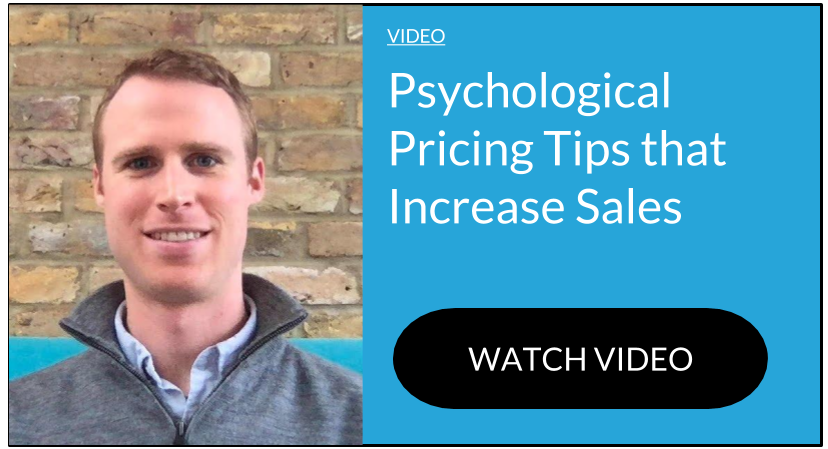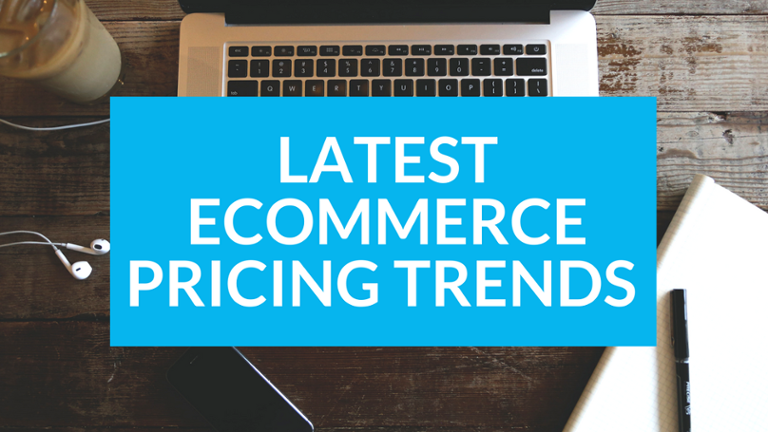
"Companies that have well-defined pricing strategies are 40% more likely to realise their monetising potential than firms that don't have
An effective pricing strategy, one that drives conversions, must have
Firstly, set clear goals
Without clear goals, your pricing strategy will be ineffective. The pricing goal depends on many factors including production cost,
- Current profit maximisation, which seeks to maximise current profit, taking into account revenue and costs. Current profit maximisation may not be the best objective if it results in lower long-term profits.
- Current revenue maximisation seeks to maximise current revenue with no regards to profit margins. The underlying objective is to maximise long-term profits by increasing market share and lowering costs.
- Maximise quantity seeks to maximise the number of units sold or the number of customers served in order to decrease long-term costs as predicted by the experience curve.
- Maximise profit margin attempts to maximise the unit profit margin, recognising that quantities will be low.
- Quality leadership uses price to signal high quality in an attempt to position the product as the quality leader.
- Partial cost recovery, relevant if you have other revenue sources.
- Survival, relevant in situations such as market decline and overcapacity. The goal may be to select a price that will cover costs and permit your company to remain in the market. During these times, survival may take priority over profits so only consider this a temporary measure.
- Status quo where you are seeking price stabilisation in order to avoid price wars and to maintain a moderate but stable level of profit.
If you don't prioritise your goals and define your strategy before you take a product to market then you could be in serious trouble when face to face with customers and coping with the pressures of competitors.

Companies that have well-defined pricing strategies are 40% more likely to realise their monetising potential than firms that don't have them.

Next, pick the appropriate pricing strategy
There are two competing pricing strategies you may use to improve your business' performance and drive conversions: profit maximisation and revenue maximisation.
Profit Maximising Strategies
Profit maximising companies use cost control and wide profit margins to increase their profitability. They focus on keeping costs as low as possible while raising prices as high as they can before customer loyalty drops enough to affect the bottom line. A classic profit maximising strategy is skim pricing.
This involves setting the price of products and services artificially high and selling only to customers who have a higher willingness to pay, i.e. the early adopters and
Skimming is particularly appropriate if you have a significant number of customers who are willing to pay a higher price than others for your product.
Some of the best examples are buyers of movies, music, online games, HD televisions, gaming consoles (such as Microsoft's Xbox video game console), smartphones (Apple iPhone in particular), and some cars.
The customers who buy these products in the early stages are impatient to own them before they become mainstream.
Companies that sell luxury items, such as designer clothes and expensive perfumes, to a small but affluent customer base often use profit maximisation strategies.
Skimming may be the right choice for you if your product represents a breakthrough delivering far superior value than its competitors.
Another scenario where it might be relevant to driving conversions is when you have production capacity constraints during the initial launch periods but intend to mass produce in the future.
Combining product and pricing actions is a classic way to implement skimming: you launch the higher-end product first, skim the market, and then launch lower-end products.
When Porsche launched its four-door car, the Panamera, it debuted the eight-cylinder model to skim the market and then released the lower-priced six-cylinder model a year later.
Revenue Maximising Strategies
Companies that focus on maximising their revenue are more interested in controlling market share than the current profit margin of their sales.
This is a characteristic strategy for businesses entering a new market and established businesses marketing a new product. This approach is particularly suited for large competitive markets with a customer base that is highly sensitive to price.
Revenue maximising companies seek to open their products or services to as many customers as possible by cutting costs, taking advantage of economies of scale and trimming profit margins.
A typical revenue maximisation pricing strategy is penetration pricing.
When you implement this pricing strategy you intentionally price your product lower in order to rapidly gain market share.
It means that if you gain enough customers early on you are better positioned to maximise customers' lifetime value from future sales and upsells.
Basically, with a penetration pricing
This has also been Samsung's pricing strategy in the smartphone market; cloud software companies have used this strategy after introducing freemium models, Ariba being a good example. When this company first started it made all its money from buyers, not sellers.
The service was free for sellers, and sellers typically brought buyers to the system. Over time, however, the company started monetising its offerings to sellers. Today, Ariba generates as much revenue from sellers as it does from buyers.
Facebook used a hugely successful penetration pricing strategy to get where it is today. In the early days, most advertisers couldn't be bothered with the site until they had amassed hundreds of millions of members.
By 2014, with more than 1 billion Facebook members, advertisers were spending $12 billion annually on Facebook advertising, which made for huge revenue.
A penetration pricing strategy might be right for you if you are in a position to rapidly gain market share, bring down unit costs and meaningfully price low to create barriers to entry. Even if you operate with small margins you might still make a success of this strategy because of your very high volume of sales - think Amazon and Uber.
There are risks involved with this strategy however and you will need to focus as much on expanding revenue from customers as you do on gaining them in the first place. You will also need to be able to follow through on future price increases if you included this in your initial strategy.
To summarise, a successful pricing strategy can be used to maximise profitability for each unit sold or from the market overall. It can also be used to defend an existing market from new entrants, to increase market share within a market or to enter a new market.
A firm’s decision on the price of a product and the pricing strategy implemented impacts on the customer's decision on whether or not to purchase the product and to drive conversions in the future. It is imperative for firms to be mindful of this fact and price their products accordingly.
Related Posts
Competitive Pricing Strategies for Retailers
Pricing Strategies that Spark Customer Loyalty
Ecommerce Pricing Strategies that Boost Sales
Is there a Better Way to Implement Your Pricing Strategy?
Best Pricing Strategies for Online Retail
What are The Most Popular Pricing Strategies by Industry Sector?
Pricing Experiments for Ecommerce Companies
12 Ways to Tempt Your Online Customers
The Power of Psychological Pricing
The 3 Types of Buyer – and How to Deal with Them
Sources
https://jda.com/file_bin/NRFVirtualLibrary/PricingStrategiesforRetailers_RetailByline.pdf
http://www.netmba.com/marketing/pricing/
http://hbswk.hbs.edu/item/building-a-better-buyer-seller-relationship
http://www.neurosciencemarketing.com/blog/articles/3-types-buyers.htm
Monetizing Innovation: How Smart Companies Design the Product Around the Price by Madhavan Ramanujam and Georg Tacke, 2016
The Strategy and Tactics of Pricing, Tom Nagle and John Hogan 2016
Pricing for Profit: How to Develop a Powerful Pricing Strategy for Your Business, Peter Hill 2013



